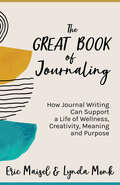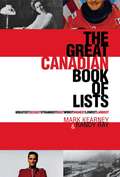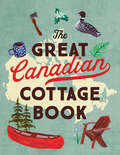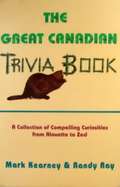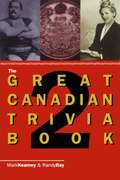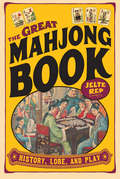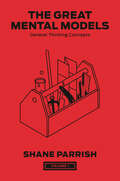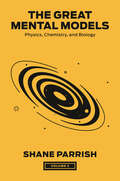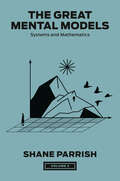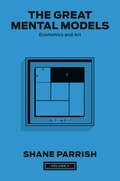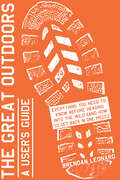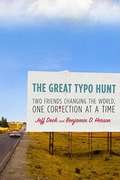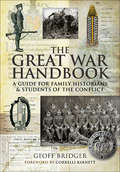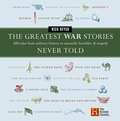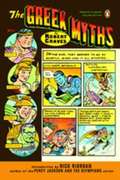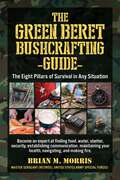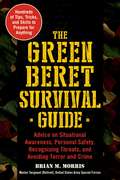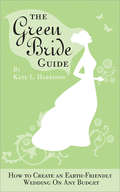- Table View
- List View
The Great Book of Journaling: How Journal Writing Can Support a Life of Wellness, Creativity, Meaning and Purpose
by Eric Maisel Lynda MonkLearn how to quell worry and anxiety and fuel creativity with journaling in this informative guide.From psychotherapist Eric Maisel and Lynda Monk, Director of the International Association for Journal Writing, a guide to journal writing for higher self-esteem. This is the next-generation book on journaling techniques that introduces a younger generation to the immense benefits of journaling and provides all journal writers with the tools they need to grow, heal, and deepen their personal writing experience.Therapeutic journal writing can promote individual healing, creativity, and community-building. The Great Book of Journaling offers multiple perspectives on journaling techniques in an easy-to-use, practical format, along with providing a comprehensive introduction to various techniques and methods for deepening your personal writing.Learn from the best.We’ve rounded up forty of the top journal experts in the world to explain exactly what journal writing can do for you! The Great Book of Journaling is full of practical tips, evidence-based research, and rich anecdotes from their coaching, teaching, therapy work with journal writers, or their personal journal writing.The Great Book of Journaling can help:Create high self-esteem, self-love, and self-confidenceImprove your health and your sense of wellbeingCalm your worry and anxietyServe your creative needsDeepen your personal writingReaders of books on journal writing such as Mindfulness Journal, The Self-Discovery Journal, or No Worries will love The Great Book of Journaling.
The Great Canadian Book of Lists
by Mark Kearney Randy RayWho were Canada’s ten most romantic couples of the twentieth century? What were this country’s worst disasters, its ten best beers, and its most controversial works of art in the past one hundred years? Where will you find the most haunted places in Canada and who are Canada’s greatest heroes, its most accomplished athletes, and its most despised criminals? The Great Canadian Book of Lists chronicles a century of achievements, trends, important and influential people, and fascinating events that have shaped this country as it heads into a new millennium. Award-winning writers Mark Kearney and Randy Ray, who have delighted readers with their bestselling books The Great Canadian Trivia Book and The Great Canadian Trivia Book 2, turn the spotlight on the twentieth century to determine the best, worst, and most significant happenings in our lives. Not content with supplying a shopping list of items about Canada, Kearney and Ray provide plenty of details to support why certain people and events are included on the lists. And their statistical snapshots comparing a variety of societal trends over different years show readers how Canada has changed in the course of the past century. You’ll also learn how experts from the worlds of science, sports, lifestyle, literature, and politics rate the personalities and events that have made Canada what it is today. And several guest celebrities weigh in with lists they’ve created exclusively for The Great Canadian Book of Lists. Enlightening, controversial and fun, The Great Canadian Book of Lists is bound to start as many arguments as it settles. Was Guy Lafleur a better hockey player than Rocket Richard? Why are rower Silken Laumann and actress Margot Kidder on the same list? What were the best Canadian novels of the twentieth century? And what are some key milestones achieved by Canadian women, medical doctors, inventors, and musicians? Innovations and flops, successes and failures, comebacks and breakthroughs, record setters and trend setters: You’ll find them all in The Great Canadian Book of Lists.
The Great Canadian Cottage Book
by Collins CanadaThe Great Canadian Cottage Book is the guide every cottage-goer needs for a weekend or a week, rain or shineFilled with ideas of what to do, drink and eat, along with great did-you-know facts and loads of stories to tell by the campfire, readers will find themselves turning to The Great Canadian Cottage Book again and again. Did you know there’s one constellation that connects human cultures from around the world and tells the story of human history? Or that caribou and reindeer are actually the same animal, but elk are different here than across the pond? Have you ever tried your hand at homemade sangria or even a pitcher of margaritas? What about making your own BBQ sauce or cooking pizza on the BBQ?The Great Canadian Cottage Book has spooky ghost stories, awesome adventure stories and incredible nature stories. Feature sections include drinks that can be made by the pitcher; beer cocktails; the best food to cook over the fire or on the BBQ; indoor and outdoor games; and lots of fun facts and trivia. And after your cottage stay, don’t forget to leave your mark in the guestbook.
The Great Canadian Trivia Book
by Mark Kearney Randy RayCanada has given the world the real Winnie the Pooh, the phrase "Beatlemania," and the man who invented the Academy Awards. If it weren’t for Canada, we might not have the pie-in-the-face gag, basketball, time zones, or the dotted white line on the middle of highways. And anyone who still thinks Canada is dull obviously doesn’t know about the Canadian who was the longest serving prisoner on Alcatraz, or the night that members of Parliament threw books and toy balloons at each other during a wild debate in the House of Commons. The Great Canadian Trivia Book explores the noteworthy and the notorious, the factual and the phenomenal, the obscure and outlandish sides of the Great White North.
The Great Canadian Trivia Book 2
by Mark Kearney Randy RayDid a Canadian kill famed escape artist Harry Houdini? Are the streets of Yellowknife really paved with gold? What was Canada’s connection to those famous "Paul McCartney is dead" rumours of the late 1960s? And just how long does it take a drop of water to flow from Lake Superior to the Atlantic Ocean? The Great Canadian Trivia Book II brings you all these answers and more. In the much-anticipated sequel to their bestseller, The Great Canadian Trivia Book, award-winning writers Mark Kearney and Randy Ray dig even deeper into Canada’s curious characters, storied past, natural phenomena, cultural idiosyncrasies, and the peculiarities of our leisurely pursuits. In the pages of this intriguing book, you’ll discover the Canadian who was responsible for introducing the glove to professional baseball, the story behind Canada’s blue two-dollar bill, how the robbery phrase "hands up" was connected to Canada, and whether a goalie can take a face-off in a hockey game. Think it’s unlikely a Canadian might have been president of the United States? That Sir John A. Macdonald was the only one in his family to achieve political fame? Or that a Canadian rock group would turn down a chance to play at the famous Woodstock festival of 1969? The Great Canadian Trivia Book II will have you thinking again. And again.
The Great Mah Jong Book
by Jelte RepThe Great Mahjong Book is a perfect resource for the beginning or experienced mahjong player. This comprehensive book covers the entire history of mahjong as it spread around the globe, on the equipment and accessories used in the game, the basic rules, how and where the game first developed and all the international variants of mahjong--including China, the U.S., Holland, the U.K., France, Germany, Italy, Japan and Hong Kong. Filled with hints, fun facts and numerous illustrations of memorabilia and artifacts, this authoritative and thoroughly enjoyable book is a perfect gift for anyone interested in this ancient and beguiling game.
The Great Mah Jong Book
by Jelte RepThe Great Mahjong Book is a perfect resource for the beginning or experienced mahjong player. This comprehensive book covers the entire history of mahjong as it spread around the globe, on the equipment and accessories used in the game, the basic rules, how and where the game first developed and all the international variants of mahjong--including China, the U.S., Holland, the U.K., France, Germany, Italy, Japan and Hong Kong. Filled with hints, fun facts and numerous illustrations of memorabilia and artifacts, this authoritative and thoroughly enjoyable book is a perfect gift for anyone interested in this ancient and beguiling game.
The Great Mental Models, Volume 1: General Thinking Concepts (The Great Mental Models Series #1)
by Shane Parrish Rhiannon BeaubienDiscover the essential thinking tools you&’ve been missing with The Great Mental Models series by Shane Parrish, New York Times bestselling author and the mind behind the acclaimed Farnam Street blog and &“The Knowledge Project&” podcast.This first book in the series is your guide to learning the crucial thinking tools nobody ever taught you. Time and time again, great thinkers such as Charlie Munger and Warren Buffett have credited their success to mental models–representations of how something works that can scale onto other fields. Mastering a small number of mental models enables you to rapidly grasp new information, identify patterns others miss, and avoid the common mistakes that hold people back.The Great Mental Models: Volume 1, General Thinking Concepts shows you how making a few tiny changes in the way you think can deliver big results.Drawing on examples from history, business, art, and science, this book details nine of the most versatile, all-purpose mental models you can use right away to improve your decision making and productivity.This book will teach you how to:Avoid blind spots when looking at problems.Find non-obvious solutions. Anticipate and achieve desired outcomes. Play to your strengths, avoid your weaknesses, … and more.The Great Mental Models series demystifies once elusive concepts and illuminates rich knowledge that traditional education overlooks. This series is the most comprehensive and accessible guide on using mental models to better understand our world, solve problems, and gain an advantage.
The Great Mental Models, Volume 2: Physics, Chemistry, and Biology (The Great Mental Models Series #2)
by Shane Parrish Rhiannon BeaubienFrom the New York Times bestselling author of Clear Thinking and Farnam Street founder, Shane Parrish. The second book in the timeless Great Mental Models series.Time and time again, great thinkers such as Charlie Munger and Warren Buffett have credited their success to mental models–representations of how something works that can scale onto other fields.Mastering a small number of mental models enables you to rapidly grasp new information, identify patterns others miss, and avoid the common mistakes that hold people back.Volume 2 of The Great Mental Models series provides a collection of over twenty important concepts from physics, chemistry, and biology in a clear and accessible style. Not only will you better understand the hidden forces that influence the world around you, you&’ll also learn how those forces can work to your advantage.Some of the mental models covered in this book include:Leverage: When the application of a small force to one end results in a larger force at the other end.Inertia: An object (or organization) at rest will stay at rest unless acted upon by an external force.Activation Energy: The minimum amount of energy required to incite a chemical reaction.Ecosystems: A community of organisms that have complex relationships to each other.The Great Mental Models series demystifies once elusive concepts and illuminates rich knowledge that traditional education overlooks. This series is the most comprehensive and accessible guide on using mental models to better understand our world, solve problems, and gain an advantage.
The Great Mental Models, Volume 3: Systems and Mathematics (The Great Mental Models Series #3)
by Shane Parrish Rhiannon Beaubien Rosie LeizrowiceFrom the New York Times bestselling author of Clear Thinking and Farnam Street founder, Shane Parrish. The third book in the timeless Great Mental Models series.Time and time again, great thinkers such as Charlie Munger and Warren Buffett have credited their success to mental models–representations of how something works that can scale onto other fields.Mastering a small number of mental models enables you to rapidly grasp new information, identify patterns others miss, and avoid the common mistakes that hold people back.Volume 3 of The Great Mental Models series focuses on systems and mathematics, simplifying more than twenty-four key concepts from these technical fields into easy-to-understand terms. It provides insights into the unseen mechanisms that influence our environment and teaches you how to apply these principles to benefit your life.Some of the mental models covered in this book include:Margin of Safety: Engineers design for extremes, not averages. To create a robust system, ensure a meaningful gap between what the system is capable of handling and what it is required to handle.Compounding: The most powerful force in the universe can work in domains other than money.The law of diminishing returns: Inputs to a system lead to more output, up until a point where each further unit of input will lead to a decreasing amount of output.Regression to the mean: Above- or below- average performance tends to correct towards the average over the long term.The Great Mental Models series demystifies once elusive concepts and illuminates rich knowledge that traditional education overlooks. This series is the most comprehensive and accessible guide on using mental models to better understand our world, solve problems, and gain an advantage.
The Great Mental Models, Volume 4: Economics and Art (The Great Mental Models Series #4)
by Shane Parrish Rhiannon BeaubienFrom the New York Times bestselling author of Clear Thinking and Farnam Street founder, Shane Parrish. The fourth and final installment in the timeless Great Mental Models series.Time and time again, great thinkers such as Charlie Munger and Warren Buffett have credited their success to mental models–representations of how something works that can scale onto other fields.Mastering a small number of mental models enables you to rapidly grasp new information, identify patterns others miss, and avoid the common mistakes that hold people back.Volume 4 of The Great Mental Models series delves into the realms of economics and art, presenting more than twenty-four valuable ideas with clear language and style. This book equips you with an understanding of the dynamics shaping our world. It will teach you strategies to leverage these principles and give you a significant edge in the aspects of life you value most.Some of the mental models covered in this book include: Creative destruction: New innovations must sometimes come at the cost of maintaining the status quo.Representation: The depiction of an idea can be visual, but it can also rely on symbols or other ideas.Genre: Creative expressions tend to be grouped according to socially constructed norms; while a work can play with or bend genre, it can&’t exist outside of genre.The Great Mental Models series demystifies once elusive concepts and illuminates rich knowledge that traditional education overlooks. This series is the most comprehensive and accessible guide on using mental models to better understand our world, solve problems, and gain an advantage.
The Great Outdoors: Everything You Need to Know Before Heading into the Wild (and How to Get Back in One Piece)
by Brendan Leonard“Leonard’s durable tome (seriously, the cover is rubber) is stuffed with so many tips about surviving in the wild, you’ll be able to leave your smartphone behind.” —Entertainment Weekly, Best New Books This easy introduction to outdoor life will ensure that even a novice won’t get lost in the woods while finding an activity he loves to do in the great outdoors--whether it’s hiking a 14er or camping on ice. With 400 strategies for engaging in the outdoors, and expert tips and tricks, The Great Outdoors: A User’s Guide makes Mother Nature easier to understand than ever before. Brendan Leonard, writer, filmmaker, and outdoor adventurer, shows the reader how rewarding it can be to live life away from the computer and get outside. From mountain climbing, to skiing, sledding, and sailing, Leonard shows that you don’t need to be a risk taker to enjoy the outdoors. And if the reader does find himself at the point of man vs. nature, Leonard shares survival skills from how to bandage a wound and read a topographical map, to how to drive on sand and remove a tick from your skin—all organized thematically and written in short takeaway entries with helpful line drawings. Bound in a uniquely rugged (and waterproof!) PVC cover material, The Great Outdoors: A User’s Guide is a friendly way into the outdoor lifestyle, whether you're looking to dabble or go all in.
The Great Typo Hunt
by Jeff Deck Benjamin D. HersonThe signs of the times are missing apostrophes. The world needed a hero, but how would an editor with no off-switch answer the call? For Jeff Deck, the writing was literally on the wall: "NO TRESSPASSING." In that moment, his greater purpose became clear. Dark hordes of typos had descended upon civilization... and only he could wield the marker to defeat them. Recruiting his friend Benjamin and other valiant companions, he created the Typo Eradication Advancement League (TEAL). Armed with markers, chalk, and correction fluid, they circumnavigated America, righting the glaring errors displayed in grocery stores, museums, malls, restaurants, mini-golf courses, beaches, and even a national park. Jeff and Benjamin championed the cause of clear communication, blogging about their adventures transforming horor into horror, it's into its, and coconunut into coconut. But at the Grand Canyon, they took one correction too far: fixing the bad grammar in a fake Native American watchtower. The government charged them with defacing federal property and summoned them to court--with a typo-ridden complaint that claimed that they had violated "criminal statues." Now the press turned these paragons of punctuation into "grammar vigilantes," airing errors about their errant errand.. The radiant dream of TEAL would not fade, though. Beneath all those misspelled words and mislaid apostrophes, Jeff and Benjamin unearthed deeper dilemmas about education, race, history, and how we communicate. Ultimately their typo-hunting journey tells a larger story not just of proper punctuation but of the power of language and literacy--and the importance of always taking a second look.From the Hardcover edition.
The Great Typo Hunt: Two Friends Changing the World, One Correction at a Time
by Jeff Deck Benjamin D. HersonThe signs of the times are missing apostrophes. The world needed a hero, but how would an editor with no off-switch answer the call? For Jeff Deck, the writing was literally on the wall: "NO TRESSPASSING. " In that moment, his greater purpose became clear. Dark hordes of typos had descended upon civilization... and only he could wield the marker to defeat them. Recruiting his friend Benjamin and other valiant companions, he created the Typo Eradication Advancement League (TEAL). Armed with markers, chalk, and correction fluid, they circumnavigated America, righting the glaring errors displayed in grocery stores, museums, malls, restaurants, mini-golf courses, beaches, and even a national park. Jeff and Benjamin championed the cause of clear communication, blogging about their adventures transforming horor into horror,it's into its, and coconunut into coconut. But at the Grand Canyon, they took one correction too far: fixing the bad grammar in a fake Native American watchtower. The government charged them with defacing federal property and summoned them to court-with a typo-ridden complaint that claimed that they had violated "criminal statues." Now the press turned these paragons of punctuation into "grammar vigilantes," airing errors about their errant errand. The radiant dream of TEAL would not fade, though. Beneath all those misspelled words and mislaid apostrophes, Jeff and Benjamin unearthed deeper dilemmas about education, race, history, and how we communicate. Ultimately their typo-hunting journey tells a larger story not just of proper punctuation but of the power of language and literacy-and the importance of always taking a second look.
The Great War Handbook: A Guide for Family Historians & Students of the Conflict
by Geoff BridgerGeoff Bridgers The Great War Handbook answers many of the basic questions newcomers ask when confronted by this enormous and challenging subject not only what happened and why, but what was the Great War like for ordinary soldiers who were caught up in it. He describes the conditions the soldiers endured, the deadly risks they ran, their daily routines and the small roles they played in the complex military machine they were part of. His comprehensive survey of every aspect of the soldiers life, from recruitment and training, through the experience of battle and its appalling aftermath, is an essential guide for students, family historians, teachers and anyone who is eager to gain an all-round understanding of the nature of the conflict. His authoritative handbook gives a fascinating insight into the world of the Great War - it is a basic book that no student of the subject can afford to be without.
The Greatest War Stories Never Told
by Rick BeyerSearch the annals of military history and you will discover no end of quirky characters and surprising true stories: The topless dancer who saved the Byzantine Empire. The World War I battle that was halted so a soccer game could be played. The scientist who invented a pigeon-guided missile in 1943. And don't forget the elderly pig whose death triggered an international crisis between the United States and Great Britain. This is the kind of history you'll find in The Greatest War Stories Never Told. One hundred fascinating stories drawn from two thousand years of military history, accompanied by a wealth of photographs, maps, drawings, and documents that help bring each story to life. Little-known tales told with a one-two punch of history and humor that will make you shake your head in disbelief -- but they're all true! Did You Know That: One military unit served on both sides during the Civil War. The War of Jenkins's Ear was actually fought over a sea captain's ear. Daniel Boone was once tried for treason. A siege on Poland in 1519 gave birth to the marriage of bread and butter Discover how war can be a catalyst for change; an engine for innovation; and an arena for valor, deceit, intrigue, ambition, revenge, audacity, folly, and even silliness. Want to know how the mafia helped the United States win World War II, when the word bazooka was coined, or how Silly Putty was invented? Read on!
The Greatest Words Ever Spoken
by Steven K. ScottScott collects in one volume all the sayings of Jesus addressing nine crucial areas of life--the sayings, teachings, and promises of Jesus on 222 topics.
The Greatest Words Ever Spoken: Everything Jesus Said About You, Your Life, and Everything Else
by Steven K. ScottEvery Word of Jesus Right at Your FingertipsHaven’t you wished you could ask Jesus any question and get his immediate help with the biggest problems you face? Now you can. For the first time ever, all of the statements Jesus made in the New Testament have been brought together and organized under more than 200 topics. When you want to know his will in a specific area of life, or you’re seeking the answer to a perplexing question, or you are desperate for his encouragement, comfort, or wisdom–you can easily find the help you need. The moment you turn to the appropriate topic heading, you will have access to the breadth of Jesus’ teaching on that subject. You can also use this book as a guide for studying Jesus’ wisdom on any topic of interest, such as prayer, forgiveness, eternity, anger, temptation, relationships, grace, or knowing God. As you immerse yourself in Jesus’ words, your life and relationships will be transformed, and your faith and spiritual passion will be renewed. Let the greatest words ever spoken bring new vision, power, and joy into your life–one statement at a time.
The Greek Myths
by Robert Graves Ross Macdonald Rick RiordanRobert Graves, classicist, poet, and unorthodox critic, retells the Greek legends of gods and heroes for a modern audience And, in the two volumes of The Greek Myths, he demonstrates with a dazzling display of relevant knowledge that Greek Mythology is "no more mysterious in content than are modern election cartoons." His work covers, in nearly two hundred sections, the creation myths; the legends of the births and lives of the great Olympians; the Theseus, Oedipus, and Heracles cycles; the Argonaut voyage; the tale of Troy, and much more. All the scattered elements of each myth have been assembled into a harmonious narrative, and many variants are recorded which may help to determine its ritual or historical meaning, Full references to the classical sources, and copious indexes, make the book as valuable to the scholar as to the general reader; and a full commentary on each myth explains and interprets the classical version in the light of today's archaeological and anthropological knowledge.
The Greek Myths
by Robert GravesCombines in a single volume the complete text of the definitive two-volume classic, citing all the ancient myths.
The Greek Myths
by Robert GravesThe Greek Myths is the definitive and comprehensive edition of Robert Graves's classic imaginative and poetic retelling of the Greek myths. 'Icarus disobeyed his father's instructions and began soaring towards the sun, rejoiced by the lift of his great sweeping wings. Presently, when Daedalus looked over his shoulder, he could no longer see Icarus; but scattered feathers floated on the waves below. . . 'Including many of the greatest stories ever told - the labours of Hercules, the voyage of the Argonauts, Theseus and the minotaur, Midas and his golden touch, the Trojan War and Odysseus's journey home - Robert Graves's superb and comprehensive retelling of the Greek myths for a modern audience has been regarded for over fifty years as the definitive version. With a novelist's skill and a poet's eye, Graves draws on the entire canon of ancient literature, bringing together all the elements of every myth into one epic and unforgettable story. Ideal for the first time reader, it can be read as a single, continuous narrative, while full commentaries, with cross-references, interpretations, variants and explanations, as well as a comprehensive index of names, make it equally valuable as a work of scholarly reference for anyone seeking an authoritative and detailed account of the gods, heroes and extraordinary events that provide the bedrock of Western literature. The result is a classic among classics, a treasure trove of extraordinary tales and a masterful work of literature in its own right. 'Among the most generous, self-willed, unseemly and brilliant writers of our century' New York Times Robert Graves (1895 - 1985) was a novelist, poet, historian, critic and translator, author of some 140 books, and one of the greatest figures of 20th century British literature. Alongside The Greek Myths, his most famous works include the historical novels I, Claudius and Claudius the God and his First World War memoir Goodbye to All That. His friendship with fellow war poet Siegfried Sassoon was the subject of Pat Barker's novel Regeneration.
The Greek and Persian Wars 499-386 BC (Essential Histories #36)
by Philip de SouzaFirst published in 2004. Routledge is an imprint of Taylor & Francis, an informa company.
The Green Beret Bushcrafting Guide: The Eight Pillars of Survival in Any Situation
by Brian MorrisBecome an expert at finding food, water, shelter, security, establishing communication, maintaining your health, navigating, and making fire. Many survival and emergency preparedness experts today use the pyramid approach to survival prioritization, putting food, water, shelter, and security in the largest block at the base of the pyramid and then community, sustainability, and higher needs in smaller brackets at the top of the pyramid. Decorated combat veteran Brian M. Morris takes a different and linear approach to survival using an eight-pillar system, developed over decades of serving as a Green Beret in the US Army Special Forces. The foundation for Morris's methodology is KISS, which stands for &“keep it simple, stupid,&” an acronym widely used by the military to remind soldiers that the best solutions are often the simplest. In his eight-pillar system, it is up to the survivor to assess their situation and then choose the pillar that is needed most to survive the situation at hand. Much like a rifle pop-up target range where a shooter is expected to hit the closer (more dangerous) 50-meter target first before engaging the 300-meter target, the survivor needs to choose the pillar that is most urgent and necessary to save their life under the circumstances.
The Green Beret Survival Guide: Advice on Situational Awareness, Personal Safety, Recognizing Threats, and Avoiding Terror and Crime
by Brian M. MorrisToday's society is one in which we, as individuals, are constantly barraged by the threat of domestic terrorism. The ever-present fear for your safety and the safety of those we love can overwhelm you if you aren’t sure how to protect yourself. Luckily, distinguished combat veteran Brian M. Morris's Green Beret Survival Guide is here to help ease your fears. Using his firsthand knowledge from the field as a Green Beret, Morris concisely outlines the steps that are necessary towards increasing one’s personal safety. Over the course of several chapters, Morris describes the importance of situational awareness, meaning staying alert, being aware of your surroundings, and understanding the reality of threats that you may face in any given situation. An individual with good situational awareness never takes anything for granted and makes security a part of his or her daily routine. By being observant and practicing several different methods of observation, one can avoid falling prey to terrorist, thieves, and other criminals. Using situational awareness as the cornerstone of a personal safety plan, The Green Beret Survival Guide delivers expert advice on preparing you and your loved ones for the worst case scenario.
The Green Bride Guide
by Kate L. HarrisonThe Green Bride Guide offers a comprehensive, go-to resource for anyone interested in planning a green wedding or including a few eco-chic elements in their event. Emphasizing elegance, ease, and individual taste, The Green Bride Guide shows eco-minded brides-to-be how to make their weddings more beautiful and sustainable. The Green Bride Guide covers all aspects of wedding planning, including engagements, location, invitations, bridal party attire, flowers, the ceremony, the reception, gifts, and the honeymoon. Green wedding veteran Kate L. Harrison offers up ideas for high, medium, and bargain-priced choices in all of these areas, giving readers the best green resources all tucked into one book. Practical and useful, The Green Bride Guide is an invaluable reference tool for any environmentally conscious pair looking to start their lives together in a way that is consistent with their values and beliefs.
